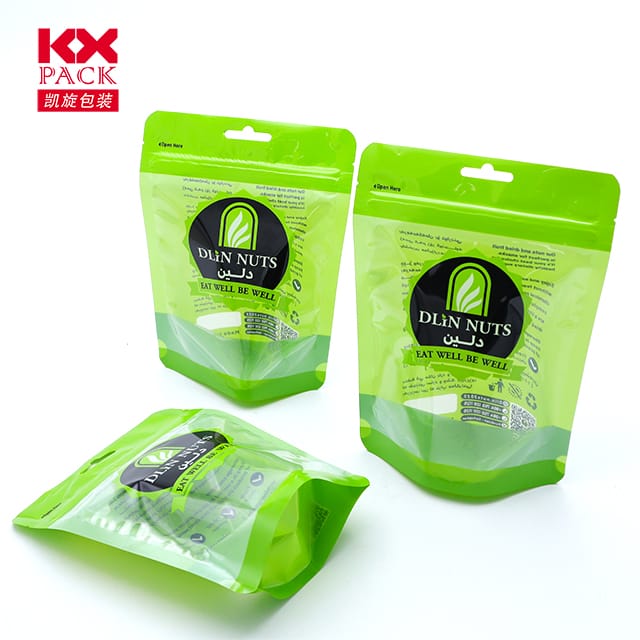ฟิล์มบรรจุภัณฑ์ที่มีความยืดหยุ่น: ในกรณีที่นวัตกรรมมีความยั่งยืน
พิมพ์ฟิล์มบรรจุภัณฑ์ที่ยืดหยุ่น
In an era where consumers demand both visual appeal and environmental responsibility, พิมพ์ฟิล์มบรรจุภัณฑ์ที่ยืดหยุ่น ได้กลายเป็นผู้เปลี่ยนเกม. วัสดุแบบไดนามิกนี้ผสมผสานการสร้างแบรนด์ที่มีผลกระทบสูงเข้ากับประโยชน์การใช้งาน, เปลี่ยนวิธีการบรรจุผลิตภัณฑ์, วางตลาด, และบริโภค. มาสำรวจว่าทำไมเทคโนโลยีนี้จึงปรับเปลี่ยนอุตสาหกรรม - และทำไมถึงอยู่ที่นี่.
Why Printed Flexible Packaging Film? A Multifaceted Advantage
- Brand Differentiation at Shelf Level
Printed flexible films allow brands to create eye-catching designs with up to 10-color printing capabilities, from vibrant gradients to matte finishes. Unlike traditional labels, graphics are printed directly onto the film, eliminating scuffing risks and ensuring consistent quality. ตัวอย่างเช่น, snack brands use shrink-sleeve films to wrap irregularly shaped products, achieving 360-degree branding that stands out in crowded aisles. - Sustainability Meets Performance
The global printed flexible packaging market, valued at $101.48 พันล้านใน 2025, is projected to grow at a 5.84% cagr through 2030. This surge is driven by demand for recyclable and biodegradable materials. นวัตกรรมเช่น การตีป๊อป (โพลีโพรพีลีนที่มุ่งเน้นแบบสอง) ภาพยนตร์ now offer recyclable options without compromising barrier properties, reducing food waste by up to 30% through enhanced shelf-life preservation. - Cost-Efficiency for High-Volume Production
Flexographic printing remains the dominant method for long runs, accounting for 46.73% of the market share in 2024 due to its cost-effectiveness. อย่างไรก็ตาม, การพิมพ์ดิจิตอล is gaining traction, enabling on-demand customization for e-commerce brands. Hybrid systems that combine both methods are emerging as a sweet spot for flexibility and scale.
แอปพลิเคชันสำคัญ: From Food to Pharmaceuticals
- อาหาร & เครื่องดื่ม:
Stand-up pouches with spouts are replacing rigid containers for sauces and infant nutrition, offering portability and resealability. Retortable films withstand high-temperature sterilization, ensuring safety for ready-to-eat meals. - Healthcare & การดูแลส่วนตัว:
Cold-seal packaging, used for temperature-sensitive chocolates and pharmaceuticals, relies on printed films with precise registration marks to align seals with graphics, maintaining product integrity. - อีคอมเมิร์ซ:
Digital printing enables serialized codes and geo-targeted promotions on mailer bags, enhancing supply chain traceability and customer engagement.(พิมพ์ฟิล์มบรรจุภัณฑ์ที่ยืดหยุ่น-
Technological Advancements Driving the Market
- Material Innovations:
- Metallized Films: Add a premium look while blocking UV light and oxygen.
- High-Shrink Films: Conform tightly to products for a sleek finish.
- ภาพยนตร์ที่สามารถผสมได้: ทำจากโพลีเมอร์จากพืช, these decompose within 180 วันภายใต้สภาพอุตสาหกรรม.
- Printing Techniques:
- Flexography: Ideal for large batches, with plates lasting up to 1 million impressions.
- การพิมพ์กราเวียร์: Offers unmatched detail for high-end cosmetics packaging.
- Digital Inkjet: Reduces setup time by 70%, perfect for small-batch runs.
- การรวมบรรจุภัณฑ์อัจฉริยะ:
Printed films now incorporate รหัส QR และ แท็ก NFC for interactive experiences, such as tracking carbon footprints or unlocking recipes.
ความท้าทาย & Future Outlook
Despite its promise, the industry faces hurdles:
- โครงสร้างพื้นฐานการรีไซเคิล: Only 14% of flexible packaging is recycled globally, due to multi-layer structures.
- การปฏิบัติตามกฎระเบียบ: Brands must navigate evolving standards like the EU’s Single-Use Plastics Directive.
ยัง, the future is bright. โดย 2028, the market is expected to reach$341.6 พันล้าน, fueled by:
- Sustainable Substrates: Bio-based PE and PLA films.
- Advanced Adhesives: Water-based and solvent-free options for easier recycling.
- AI-Driven Design: Tools that optimize ink usage and reduce waste.
บทสรุป: A Canvas for Innovation
พิมพ์ฟิล์มบรรจุภัณฑ์ที่ยืดหยุ่น is more than just a container—it’s a strategic tool for brands to tell their story, reduce environmental impact, and meet evolving consumer expectations. As technology advances, expect to see even more creative applications, from edible inks to self-healing materials.
For businesses looking to stay ahead, ข้อความชัดเจน: Embrace flexibility, print with purpose, and package sustainably. The future of packaging isn’t just flexible—it’s intelligent.
What’s your take on Printed Flexible Packaging Film? แบ่งปันความคิดของคุณในความคิดเห็นด้านล่าง! 🌍✨







